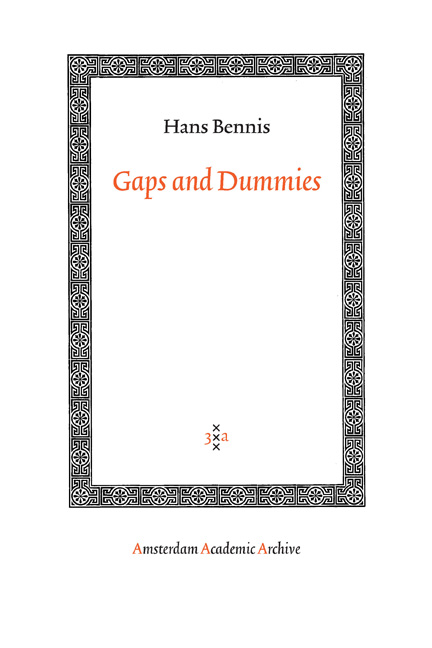1 - Gaps and Parasitic Gaps
Published online by Cambridge University Press: 20 January 2021
Summary
Introduction
Recently, the phenomenon of parasitic gaps has become one of the most widely discussed topics in generative grammar. Their relevance to linguistic theory derives on the one hand from their systematic distribution, as pointed out by Engdahl (1983), and on the other hand from the fact that their appearance is so peripheral that “it is highly unlikely that new and independent principles need be invoked” to determine their distribution “or that rules of particular grammars are involved” (Chomsky 1982,39). In Some Concepts and Consequences (Chomsky 1982), it is demonstrated that the distribution of parasitic gaps in English can in fact be made to follow from independent principles of Government and Binding Theory, without any stipulations specific to parasitic gaps. In this chapter, the distribution of parasitic gaps in Dutch is investigated. It will be demonstrated that this distribution varies quite substantially from the distribution in English. Given the reasoning above, this difference should follow from independently existing differences between the two languages. As we shall show, this is in fact the case.
This demonstration requires a discussion of the distribution of gaps in general. In section 2, we provide an account of the distribution of gaps in terms of a general principle, which we call the Gap Condition. This condition, which is modeled on Kayne's (1984) Connectedness Condition, replaces the standard ECP of Chomsky (1981). In section 3, it is demonstrated that the Gap Condition adequately accounts for differences with respect to P_stranding in Dutch and English. Section 4 illustrates the application of the Gap Condition to parasitic gap constructions in English.
These three sections provide the background for the discussion of parasitic gaps in Dutch in section 5. In 5.1 it will be seen how the Gap Condition explains the much more restricted distribution of parasitic gaps in Dutch compared to English. In 5.2 we discuss the surprising phenomenon of gaps which have all the properties of parasitic gaps except for the apparent absence of a licensing gap. We shall argue that there is in fact a licensing gap and explain why this particular phenomenon can be found in an OV language like Dutch, but not in a VO language like English. The relevant difference will be seen to have difference in transparency various ramifications, including a of Exceptional Case Marking constructions.
- Type
- Chapter
- Information
- Gaps and Dummies , pp. 7 - 92Publisher: Amsterdam University PressPrint publication year: 2005

